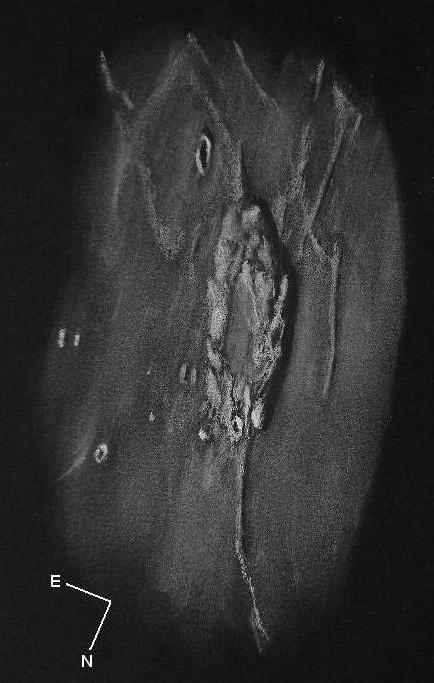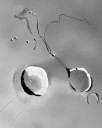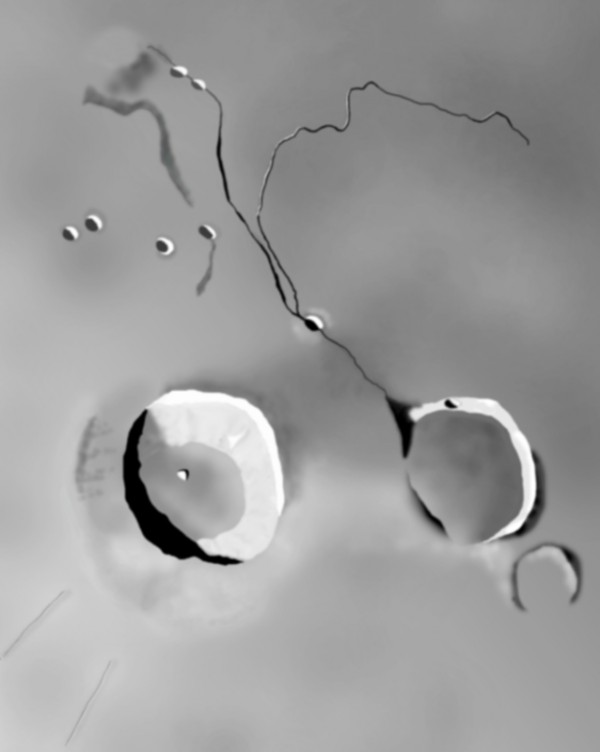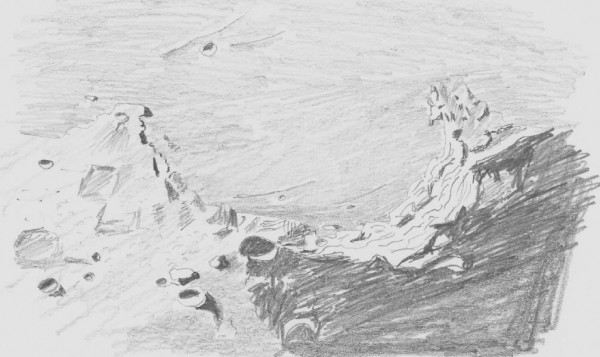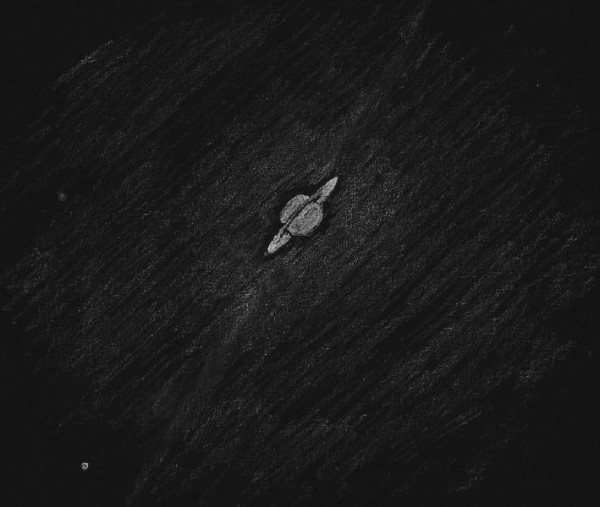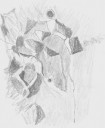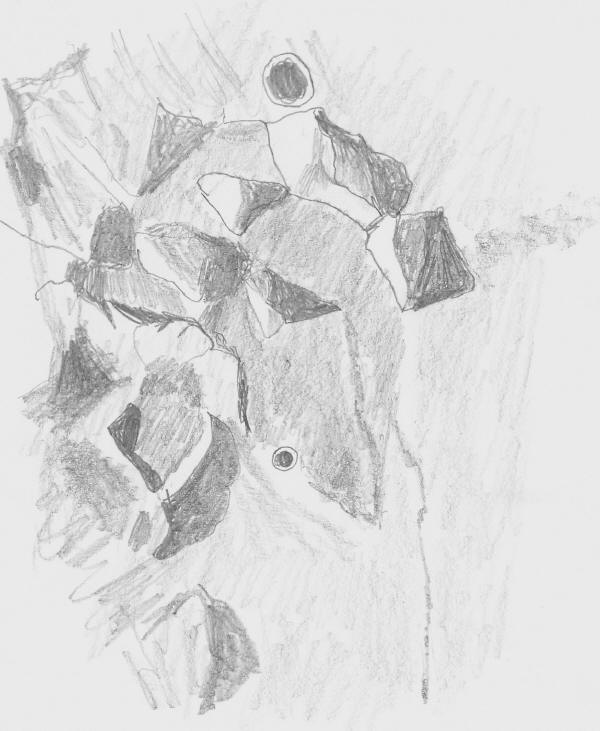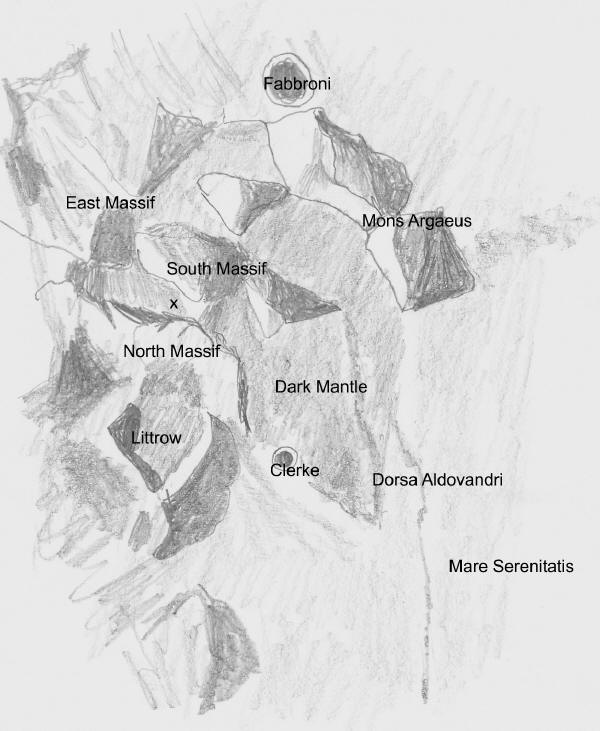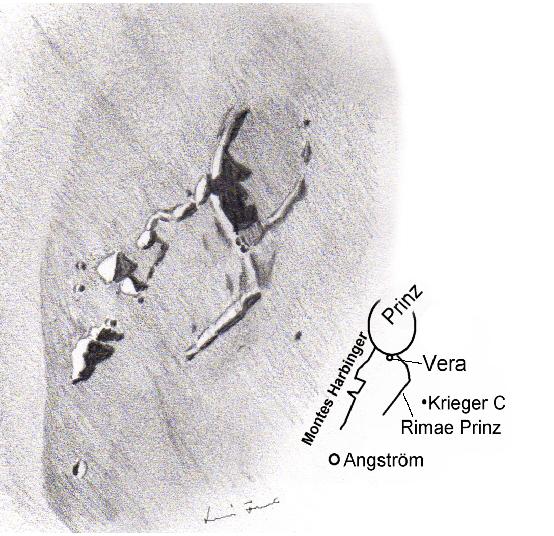Hello artists,all o.k.? Compliments for last Moon sketches ,great work ( at Frank in paricular)at all.
I made three sketches of Moon ,two in one week,but at moment i sent you my two sketches,one of a cups of crescent Moon,one of Sinus Iridum and environs.
I used my refractor Kenko 80mm 1000 f.l.,little but perfect for this work.
About my sketch of Moon cups,i go at hill near my town.At first i go for one observing session but when i see in eyepiece this incredible zone i decide to draw quyckly.
I see the mountains coming out from shadow ,one light thread of light on the surface.
The Moon phase was crescent(one day),this is the first time that i made one sketch of this zone,i want to made other,nextly.
The second ( and last) sketch i made last friday.
I mounted my refractor on the roof of my room’s terrace,i list music….perfect Moon sketch session.
One incredible neat vision ,the Sinus Iridum, Bianchini crater, Mount Jura and many splits and shadows…..very difficult work !
I go to bad satisfied but with head-ache.
I hope like you.
Ciao a tutti,Giorgio.
About first sketch( cups of Moon):
Site:Pergola (Serraspinosa Hill,400 meters over see level )
Date:7 of May 2011 10,50 p.m.
Moon phase : Crescent
Instrument:Refractor Kenko 80/1000
Eyepiece:15mm + Barlow (133x)
Seeing :Very good
Air: Calm.light cold.
Technnics:Graphite pencill on withe paper fabriano.
About last sketch (Sinus Iridum and environs):
Site :Pergola,Marche Region,center Italy
Date:13-14 of May 2011 from 10,40 p.m. to 01,13 a.m.
Moon phase: Crescent (11,3 days )
Instrument: Refractor Kenko 80mm/!000
Eyepiece:15mm+ barlow
Seeing:Good,turbulance and light clouds at the end.
Air: Light cold,no wind.




